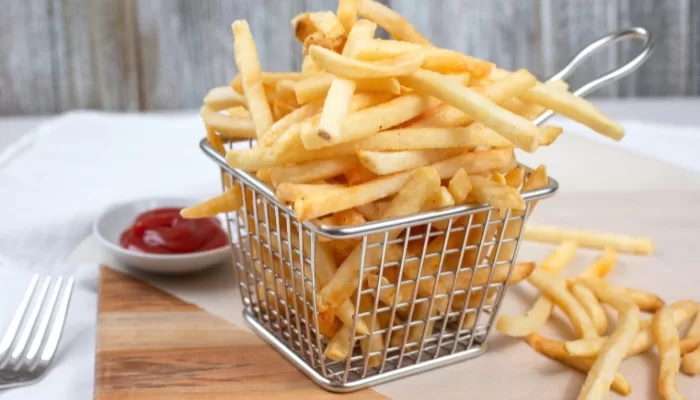Food & Beverage
Is the Golden Age of French Fries Coming to an End?

- French fries are facing declining demand due to health-conscious consumer trends and economic pressures, impacting suppliers like Lamb Weston.
- Lamb Weston is closing a production plant and cutting jobs as fast-food chains like McDonald’s struggle to maintain french fry sales.
- The fast-food industry is focusing on innovation and healthier options to adapt to shifting consumer preferences and sustain French fry popularity.
French fries, formerly the unquestioned champion of fast-food sides, are undergoing a metamorphosis. With altering health-conscious consumer choices and a tightening economic climate, demand for conventional fries, which have dominated fast food for decades, is declining. This shifting dynamic affects big suppliers such as Lamb Weston, North America’s largest producer of French fries, as well as fast-food behemoths like McDonald’s.
Lamb Weston Takes a Hit
Lamb Weston, a major supplier to fast-food restaurants and grocery shops, recently announced the closing of its Washington state production site, laying off roughly 400 workers. This move mirrors a broader trend of declining demand for french fries in the United States, which has had a significant impact on the company’s revenue. Lamb Weston shares have already fallen 35% this year, signalling that the potato giant will face difficult times ahead.
Despite the fast-food industry’s efforts to entice customers back with appealing value meals, such as McDonald’s $5 meal offer, individuals are ordering smaller servings of fries or refusing to order them at all. According to Lamb Weston’s CEO Thomas Werner, “Many of these promotional meal deals have consumers trading down from a medium fry to a small fry,” emphasising the shift towards reduced consumption.
Health-Conscious Customers Drive Change
The fall in French fry sales is not just due to pricing. One of the most important influences on this trend is the rise of health-conscious eating. More people are attempting to improve their diets by eating items with fewer calories and fat. With consumers becoming more concerned about nutrition and health, the attractiveness of deep-fried potatoes is diminishing.
Traditional fast-food restaurants are finding it more difficult to maintain their market share as consumer behaviour shifts. Instead of eating french fries, people are exploring alternatives such as salads, baked vegetables, and whole grains, which has a substantial influence on demand for fries.
Economic Pressures Constrain Spending
Economic issues also contribute significantly to the decline in demand for french fries. Rising food prices and inflation are straining household budgets, causing more people to save by eating at home rather than dining out. Fast food, which was once an economical option, is now seeing a drop in customer traffic as individuals seek out more cost-effective lunch alternatives.
This trend challenges the fast-food business, which has historically relied on fries as a high-margin commodity to enhance earnings. Restaurants are feeling the pinch as customers reduce their discretionary spending, putting the old business model based on inexpensive enjoyment to the strain.
The Fast Food Industry’s Response
In response to these shifting dynamics, organisations such as Lamb Weston are looking into ways to adapt to changing consumer tastes. The emphasis is now on innovation and developing healthier products that appeal to contemporary tastes. To meet the needs of health-conscious clients, some fast-food restaurants are experimenting with novel fry variations such as baked, air-fried, or low-sodium alternatives.
Partnerships between suppliers and fast-food businesses are also contributing to this change. These firms hope to keep their consumer base by producing menu items that emphasise balanced nutrition and lower-calorie options.
Is The Golden Age of Fries Over?
The question remains: is the golden age of fries over, or are we witnessing a moment of transition that will eventually usher in a new era in the fast-food industry? Although the conventional French fry may no longer have the same broad appeal it once did, the industry’s drive to innovation and adaptability implies there is promise for the future.
The industry has not given up on the popular fry just yet. Suppliers and fast-food restaurants may collaborate to extend the life of this classic side dish by listening to customers, embracing change, and rethinking how fries fit into the larger food landscape. Even as the classic fry faces problems, its evolution may open the door to new prospects, keeping the crispy treat on the menu for years to come.
The Road Ahead for French Fries
As the fast-food business adapts to changing trends, the future of french fries hinges on the ability to match consumer demand for healthier options with the convenience and flavour that fries have long represented. Whether through healthier recipes, inventive product innovation, or new value arrangements, the industry’s resiliency will be tested as it navigates these shifts.

























































